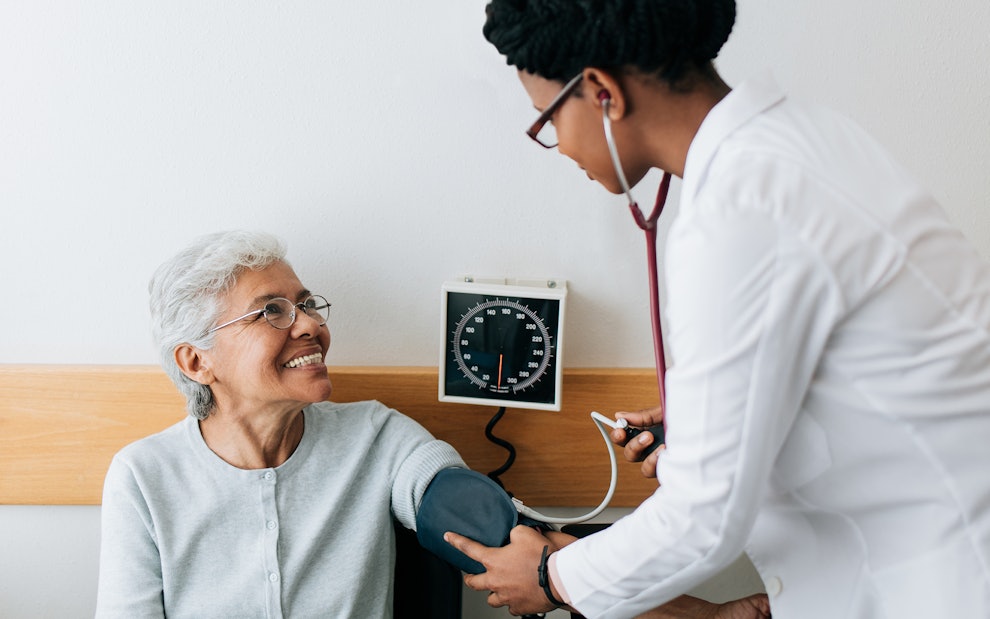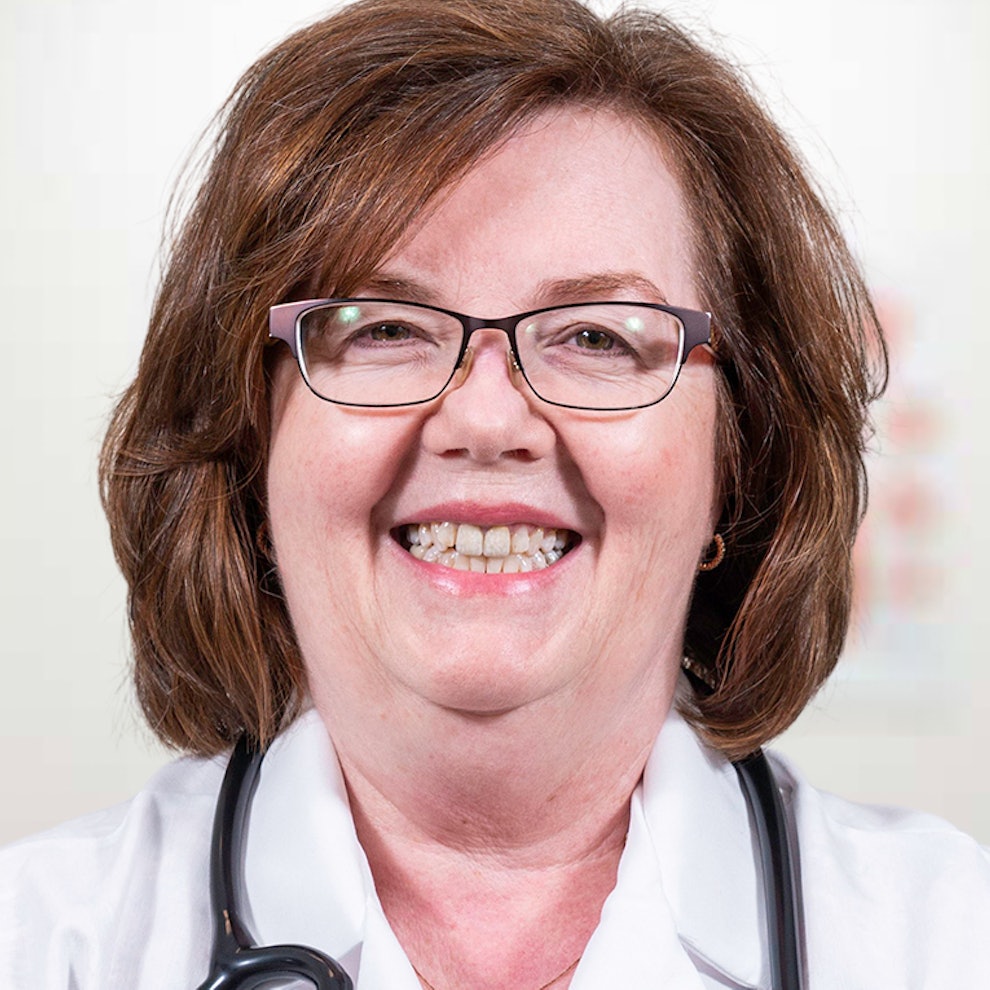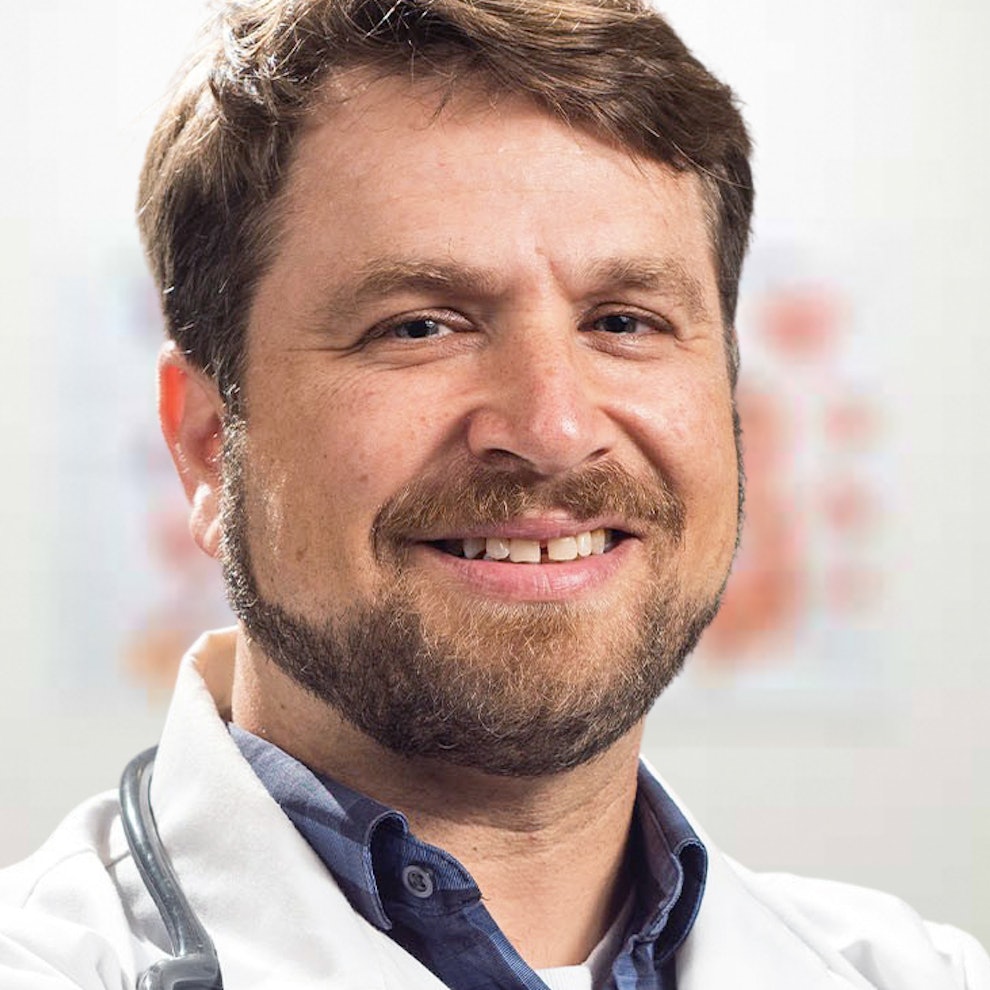Diseases Affecting African Americans: Causes, Prevention, Etc
Article at a glance
There are a variety of diseases that are more likely to affect African American and Black communities. All of these diseases are treatable and most are preventable with proper care measures. To learn more about what these diseases are and how a Black American can work to prevent them, read this section.
Environmental factors also play a role in the healthcare of many patients, including Black Americans. Understanding what risks to look for in your location is pertinent to understanding what preventive care strategies you need to take. To learn more about the environmental factors affecting the healthcare of Black Americans, read this section.
In addition to health screenings and appropriate vaccinations, there are many general self-driven steps a patient can take to maintain their health and avoid adverse health conditions. To learn more about the various self-drive initiatives a Black American can practice to take charge of their wellbeing, read this section.

Preventative healthcare focuses on the actions a patient can take in their present life to avoid future health crises from occurring. This type of healthcare includes health screenings, annual visits with a primary care provider, appropriate vaccinations, and more. A facet of preventative healthcare also includes a patient considering their family background prior to visiting a doctor so they can be aware of how certain diseases may disproportionately affect their community. When a community can trace their ancestry back to a specific location, it’s likely that their ancestors have passed down similar genes and traits through the years. Part of the genes that have been passed down may include a “disease-causing mutation” that can incite a particular genetic disorder to be more common amongst certain ethnicities.
According to the Pew Research Center, in 2019, over 46 million people (14% of the United States population), identified as Black. An example of a disease that is more likely to affect Black Americans is sickle cell anemia. When taking steps towards health and wellness in one’s daily life, it’s important for a patient to understand how they may be predisposed to various diseases. Being aware of these health threats allows a patient and their loved ones to take the proper measures that eliminate as much risk as possible or allow them to act early on suggested treatment plans.
Diseases that Disproportionately Affect African Americans
According to the U.S. Department of Health and Human Services Office of Minority Health (OMH) and the U.S. National Library of Medicine, Black Americans are more likely to be affected by diabetes, sickle cell anemia, cancer, heart disease, stroke, asthma, pneumonia, and HIV/AIDS. When further broken down by sex, it is found that additional health issues related to maternity, obesity, and stress are largely affecting Black women. According to the National Institutes of Health, Black women are 3 to 4 times more likely to die of pregnancy-related complications, more than 80% of midlife Black women are overweight, and all Black women are predisposed to have higher rates of stress. It’s important to note that often, these diseases occur together or may mutually influence one another. For example, struggling with diabetes can put a patient at a higher risk of having a stroke or heart attack. However, before diving into how to prevent these health issues from intruding on one’s life, it’s necessary to understand what they are and where they come from.
Diabetes
Overall, there are five types of diabetes that include: Type 1 Diabetes, Type 2 Diabetes, Gestational Diabetes, Monogenic Diabetes, and Cystic Fibrosis-Related Diabetes. However, the two most common forms consist of Type 1 and Type 2 Diabetes, which are induced by how a patient’s body handles insulin.
Essentially, whenever we eat food, our body processes what is called ‘blood glucose’ or ‘blood sugar’ which acts as the primary energy source for our body. However, in order for the glucose to transfer from our food to our blood to our cells, we need a hormone called insulin which is created by the pancreas. Insulin helps the glucose to get to our cells, thus providing the body with the energy it needs to function. However, diabetes occurs when either insulin isn’t being made by the pancreas, or the body is not using the insulin properly.
Type 1 Diabetes
Type 1 diabetes occurs when one’s immune system attacks its own pancreas and destroys the cells that make insulin. This is why those with type 1 diabetes have to regularly take insulin because, without it, their body would have no energy and fail. The primary cause for this disease is genetics and therefore, it’s less likely that a patient can prevent it. However, there are many steps a patient can take in their daily life to improve the side effects of their disease and improve their condition.
Signs and Symptoms of Type 1 Diabetes
Initial symptoms of type 1 diabetes include but are not limited to:
Increased sensation of thirst and desire to urinate.
An uptick in hunger.
Feeling overwhelmingly tired or fatigued.
Consistent blurred vision.
Weight loss that seems sudden or unexplainable.
Type 2 Diabetes
Type 2 diabetes (the most common form of diabetes), is induced when one’s body does not make enough insulin or doesn’t use the insulin well. Insulin is a hormone that affects the levels of blood sugar (glucose) and how it is used by the body. Unlike type 1 diabetes, it is possible to prevent the development of type 2 diabetes as it can be avoided through the maintenance of a healthy diet and exercise. Risk for developing type 2 diabetes can be identified early by seeing your doctor for annual screenings.
Signs and Symptoms of Type 2 Diabetes
Initial symptoms of type 2 diabetes include but are not limited to:
Increased sensation of thirst and desire to urinate.
An uptick in hunger.
Feeling overwhelmingly tired or fatigued.
Consistent blurred vision.
Weight loss that seems sudden or unexplainable.
A pins and needles sensation in one’s extremities.
Sores or scabs that don’t seem to heal or go away.
Prevention Care for Type 2 Diabetes
The biggest preventive care measure a Black American can take to avoid developing type 2 diabetes down the line is maintaining a healthy lifestyle. Balancing a diet that incorporates a variety of fruits, vegetables, lean proteins, and whole grains along with daily exercise is vital to keeping our body healthy and well maintained. To learn more about what’s recommended as a healthy diet and exercise plan, read this section.
Note: African Americans are at a higher risk of developing any form of diabetes. Both type 1 and type 2 diabetes are likely to generate other health issues such as heart disease, stroke, kidney disease, blindness, dental disease, nerve damage, and/or foot problems, due to the patient’s increased blood sugar levels. If a patient senses that they have either form of diabetes or that their lifestyle may stimulate type 2 diabetes, they should consult a physician.
Sickle Cell Anemia
Sickle cell anemia is a genetic disorder caused by mutations in the HBB gene. This mutation affects hemoglobin, which is the molecule in red blood cells that deliver oxygen throughout the body. However, those with sickle cell anemia have atypical hemoglobin called hemoglobin S which warps the red blood cells into a sickle or crescent shape. When red blood cells are transformed this way, they often break down prematurely and incite anemia within a patient. These stiff, crescent-shaped cells can get stuck in small blood vessels, depriving oxygenated blood from reaching vital organs including the lungs, kidneys, spleen, and brain, thus causing the patient to be in a great deal of pain. The end result of these episodes can be organ damage and severe chronic pain.
Signs and Symptoms of Sickle Cell Anemia
Many of those with sickle cell anemia are diagnosed at an early age. The initial symptoms of this disease include but are not limited to:
Feeling extremely fatigued or tired.
Episodes of intense pain at various places throughout the body.
Swelling of the extremities.
Frequent infections.
Puberty or natural growth being stunted.
Issues with vision.
Yellow tinting in the skin or whites of the eyes.
Note: Sickle cell anemia is most often diagnosed in infancy and is known to disproportionately affect the Black community. If your child is displaying any of the symptoms above in addition to fever and abdominal swelling that is tender to the touch, a physician should be consulted immediately. Furthermore, a parent may also receive screening to see if they have sickle cell themselves or carry the sickle cell trait.
Cancer
Cancer occurs when a body’s cells divide at an increased rate that the body cannot handle. These cells that have divided uncontrollably, become a tumor that can either be benign or malignant. If a tumor is malignant or cancerous, it has the potential to metastasize, meaning it can spread to other parts of the body. The extent of metastasis is measured using a system of stages that range from I to IV. There are currently over 100 types of cancer a person can have that vary in causation, signs, and symptoms. However, general causes that increase a person’s risk of cancer include improper diet or nutrition, an environment inundated with certain toxins such as pesticides or asbestos, exposure to radiation, tobacco, and/or hormone therapy. It’s also common for cancer to run in families. This point emphasizes the importance of knowing one’s family medical history if possible so risk factors and warning signs of certain cancers can be more closely monitored and managed.
Preventive Care for Cancer
Three of the most important steps a patient can take to lessen their chances of getting cancer include but are not limited to: cancer screenings, receiving appropriate vaccinations, and maintaining a healthy lifestyle.
Cancer Screenings
Breast Cancer Screening: When a woman reaches 40, they should discuss mammogram options with their doctor to see if and when they should begin screening in this form. Once a patient has their first mammogram, they should discuss with their provider a screening schedule for mammograms in the future.
Cervical Cancer Screenings: When a woman turns 25 they should receive their first Pap test which screens for abnormal cells in the cervix. A woman should continue to be screened in this form every three years until their doctor recommends that they are okay to stop. Women are also highly encouraged to receive their HPV vaccine at 11 or 12 years old to aid in their protection against cervical cancer.
Colorectal Cancer Screenings: It is recommended that all adults between the ages of 50 and 75 should be screened for colon cancer or precancerous polyps that can develop in the colon or rectum. After a person’s first screening, they should discuss a schedule with their provider about future colonoscopies because it could depend on their results.
Lung Cancer Screenings: Those with a history of smoking should be screened yearly for lung cancer between the ages of 50 and 85. The screening consists of a low-dose CT scan that allows the doctor to visualize what the patient’s lungs look like.
To learn more about cancer screenings, visit this source.
Vaccinations that Help Prevent Cancer
Human Papillomavirus (HPV) Vaccine: This vaccine is recommended for preteens at 11 or 12 years old as it helps to protect these patients from cancers (specifically cervical cancer) caused by the common sexually transmitted infection (STI), HPV.
Hepatitis B Vaccine: The Hepatitis B virus is what causes liver disease ranging from mild to severe. The Hepatitis B vaccine is available for all age groups to protect against HBV.
Maintaining a Healthy Lifestyle
In order to keep our bodies healthy and well maintained, it’s important to cut out habits that are negatively impacting them such as smoking and drinking alcohol in excess. It’s also important to wear sunscreen when spending time in the sun to prevent skin cancers. In addition to these factors, it is also vital that each patient works towards incorporating some form of exercise daily along with sustaining a balanced diet. To learn more about what’s recommended as a healthy diet and exercise plan, read this section.
Heart Disease
Heart disease is a general term that encompasses the diseases or conditions related to the heart. The most common of these conditions is coronary artery disease (CAD) which directly affects how blood flows to the heart. According to the Center for Diseases Control and Prevention, approximately 655,000 Americans die from heart disease each year or about one in every four deaths. However, there are many steps a patient can take to lessen their likelihood of developing heart disease such as maintaining a healthy lifestyle and receiving proper health screenings each year. Furthermore, it’s important to avoid heart disease risk factors such as tobacco, alcohol, high blood pressure, high cholesterol, family history, and obesity.
Signs and Symptoms of Heart Disease
It’s common for heart disease symptoms not to show until the patient experiences the warning signs of having a heart attack, heart failure, or an arrhythmia otherwise known as an abnormal heart rhythm. The symptoms of these events are as follows:
Heart Attack: Intense chest pain or discomfort, pain in the upper back or neck, indigestion, heartburn, nausea sensation or desire to vomit, dizziness, and/or shortness of breath.
Arrhythmia: Feeling a fluttering sensation or racing heartbeat in one’s chest.
Heart Failure: General fatigue, shortness of breath, and swelling in one’s feet, ankles, legs, abdomen, or neck.
Preventive Care for Heart Disease
The main component of a heart disease prevention plan is striving towards keeping a balanced diet and incorporating some form of exercise daily. To learn more about what’s recommended as a healthy diet and exercise plan, read this section.
Stroke
A stroke is induced when part of the brain is cut off from its blood supply, thus preventing it from receiving the oxygen and nutrients it needs to function. When a stroke occurs, brain cells begin to rapidly die and immediate medical help is necessary. While most strokes come on suddenly, reducing risk factors and avoiding unhealthy habits can prevent a stroke from happening. Various risk factors include, but are not limited to physical inactivity, excessive drinking, using heavy narcotics, practicing an unhealthy diet, smoking cigarettes, living with untreated high cholesterol and/or high blood pressure, having diabetes, etc.
Signs and Symptoms of a Stroke
Symptoms of a stroke may vary from patient to patient, however, if someone near you is having a stroke, it’s important to note when the symptoms or signs began. Warning signs of a stroke include:
Problems with speaking or comprehension, such as slurring one’s words or experiencing confusion when communicating.
Paralysis or the feeling of numbness in one’s face, arm, or leg, most often affecting one side of the body.
Experiencing suddenly blurred or blackened vision in one or both eyes.
Feeling a sudden wave of intense nausea linked with vomiting, dizziness, severe headache, or loss of consciousness.
Losing coordination, balance, and the ability to walk.
Note: A stroke requires immediate medical attention. If you or someone you know is experiencing any of these symptoms, seek help urgently.
Asthma
Asthma is caused by the narrowing of one’s airways, causing breathing difficulties, wheezing sounds or sensations, and shortness of breath. The severity of this condition varies from patient to patient but oftentimes it is triggered similarly by things such as pollen, dust, physical activity, cold air, air pollution, stress, and more. What causes asthma to develop is still unclear, however, it’s argued that it’s likely a combination of environmental and genetic factors.
Signs and Symptoms of Asthma
Symptoms of asthma range from mild to severe depending on the patient, however, the common signs are as follows:
Feeling short of breath.
Recurring tightness or pain in the chest.
The sound and feeling of wheezing when exhaling.
Coughing or wheezing attacks are exacerbated by a respiratory virus such as the common cold.
Note: Many Black Americans live in urban areas which exposes them to more pollutants. To learn more about how one’s geographic location can trigger asthma, read this section.
Pneumonia
Pneumonia is caused by a viral or bacterial infection in one’s lungs where the air sacs are filled with fluid or mucus, thus making breathing difficult.
Signs and Symptoms of Pneumonia
Depending on the extent of the infection, pneumonia can range from presenting mild to severe symptoms, such as:
Chest pain when breathing or coughing.
A recurring cough that may also be producing phlegm.
General state of fatigue or tiredness.
Experiencing a fever along with shakes and chills.
Nausea and/or vomiting.
Constantly feeling short of breath.
For patients 65 and older, feeling confused or experiencing impaired cognition is a symptom of pneumonia.
Preventive Care for Pneumonia
Get Vaccinated: Pneumococcal vaccinations are recommended for those 65 years and older as they are more likely to contract pneumonia and develop adverse symptoms from the infection. To learn more about the pneumococcal vaccine, speak with a care provider or visit this source.
Practice Good Hygiene: Wash your hands, take regular showers, and cover your mouth with your elbow when sneezing or coughing. Keeping up with regular hygiene habits is the best way to ensure you are protected from pneumonia.
Healthy Lifestyle Changes: Curb harmful habits such as drinking alcohol in excess and smoking. Furthermore, aim to incorporate daily exercise and a balanced diet into your everyday life. To learn more about what’s recommended as a healthy diet and exercise plan, read this section.
HIV/AIDS
Human immunodeficiency virus (HIV) attacks the cells in a patient’s body that help to fight off infection, thus making the individual more susceptible to other infections and diseases. Acquired immunodeficiency syndrome (AIDS) is the late stage of an HIV infection. The most common way HIV is spread is through unprotected sex with or sharing injection drug equipment with someone who already has the virus. While this virus does critically affect one’s health, it is also treatable by medication which allows many living with HIV to live long, healthy lives. However, once reaching the point of developing AIDS, one’s life expectancy reduces to approximately three years while taking medication. Due to the severity of this infection, practicing preventive measures is crucial. Preventive measures include but are not limited to practicing safe and protected sex, avoiding blood exposure by not sharing needles, and getting regularly Sexually Transmitted Infection (STI) tested if you’re sexually active. To learn more about the expansive ways to prevent the development of HIV or AIDs, visit this source.
Signs and Symptoms of HIV/AIDS
HIV symptoms range depending on the severity of a patient’s case, which is why cases are measured in stages (stage one to stage three).
Stage 1: Acute HIV Infection
After 2–4 weeks of being infected with HIV, most patients will experience a flu-like illness that includes symptoms such as:
Fever
Chills
Rash
Night sweats
Muscle aches
Sore throat
General fatigue
Swollen lymph nodes
Mouth ulcers
Stage 2: Clinical Latency
It’s possible that patients may experience no symptoms at all after being infected with HIV. Without detection, a patient moves into having a chronic HIV infection which can last for anywhere between 10 to 15 years without treatment.
Stage 3: AIDS
If a patient receives no HIV treatment throughout their infection, it’s likely their immune system will become so weak that they will progress to having AIDS. Symptoms of AIDS are as follows:
Rapid weight loss.
Recurring fever.
Night sweats.
Extreme levels of fatigue or tiredness.
Prolonged swelling of the lymph nodes.
Prolonged periods of diarrhea.
Sores of the mouth, genitals, or anus.
Pneumonia.
Red, pink, brown, or purplish blotches on the mouth, nose, or eyelids.
Memory loss, depression, anxiety, or signs of other mental disorders.
Note: If a patient feels they may have been infected with HIV, it’s important to see a medical professional as soon as possible to get tested, diagnosed, and treated. To learn more about treatment for HIV/AIDS, visit this source.
External Factors that Directly Impact Diseases Affecting African Americans
When thinking through preventive care measures for Black Americans, it’s important to first be aware of which diseases are more likely to affect their community or family and know what external factors also play a role in their healthcare. Two of the main external factors that have a hand in the healthcare of Black Americans are the economic disparities that exist between their community and others, in addition to their geographic location.
Economic Disparities
Money plays a large and important role in a patient’s access to healthcare. Therefore, being aware of the economic disparities that exist and how to overcome them as a Black individual seeking healthcare, is crucial.
In 2019, the Census Bureau reported that the average household income for Black Americans was $43,771 in comparison to the $71,664 average for white Americans. In addition to this statistic, the Bureau also reported that 21.2% of Black Americans were living at the poverty level in comparison to 9% of white Americans. Understanding these statistics translates into the reason why 10% of Black Americans are uninsured and 43.5% of Black Americans rely on government afforded insurance such as Medicaid or Medicare. Having access to health insurance is critical when it comes to the costs needed to receive healthcare. Not to mention, having thin access to money directly impacts a person’s health due to consequences it induces in one’s access to shelter, food, hygiene, etc.
One of the advantages of Oak Street Health is that they have medical professionals available to explain the benefits of various insurance plans to their clients. To learn more about Medicaid and Medicare, in addition to other common private health insurance plans, visit this source.
Geographic Location
Where patients live geographically speaks volumes to the environmental factors that play into their health.
According to the Pew Research Center, in 2019 New York City, Atlanta, and Washington D.C. were the top metropolitan areas for Black Americans to live in. When their Black populations are combined, the statistics show that 7.7 million Black Americans live in these metro communities. As many know, living in urban areas constantly exposes an individual to various types of pollution more so than in other living situations. A study conducted by America’s Health Rankings noted that minorities are found to have higher levels of air pollution exposure than their white counterparts. The reason this information is important for a Black American to be aware of is because, if they are one of the individuals living in an urban area they are constantly exposed to pollutants that harm their health. According to the American Health Rankings study, air pollution increases the likelihood of developing a wide range of health problems including but not limited to: heart disease, lung disease, asthma, and chronic bronchitis. Not to mention, heavy exposure to pollution is known to put any individual at risk of premature death due to the health problems it induces.
Another issue that is commonly found predominantly in minority communities is what is known as a “food desert.” By definition, a food desert is, a geographic location “where residents’ access to affordable, healthy food options (especially fresh fruits and vegetables) is restricted or nonexistent due to the absence of grocery stores within convenient traveling distance.” Not having access to sustainable sources of healthy food leads to an increased risk of developing unhealthy diet and exercise habits and thus, generating many of the common health issues affecting African Americans that are mentioned in this article.
When a Black American is considering their health and overall wellbeing, it’s important that they are aware of the risk factors and health triggers that exist in their environment. Awareness is the first step in understanding what your body is facing. It allows the patient to take charge of their own health, limit the toxins affecting them each day, and make a plan of the preventive care measures that are most crucial for them.
General Preventive Care Measures
Preventive care ranges from self-controlled initiatives such as maintaining a healthy lifestyle to medical care and screenings guided by your physician. Knowing the steps one can take to prevent or curb the side effects of the diseases disproportionately affecting their community, helps increase a patient’s health and wellness. General measures to take when practicing preventive care include but are not limited to:
Obtaining Health Insurance
Whether it’s privately owned or afforded through the government, having access to health insurance is crucial as it helps to cover the cost of consistent health care. If you’re looking for options on how to find and implement a health insurance plan in your life, visit this source.
Annual Doctor’s Visits
Visiting the doctor at least once a year allows a patient to ensure their body is healthy and well. These visits also allow time for a doctor to share any recommended health screenings, vaccines, etc. with their patient. Not to mention, it gives the patient time to discuss any physical, mental, or emotional turmoil they feel they are going through and may need to seek help with.
Health Awareness
Understanding which diseases run in one’s family or are more likely to impact one’s community is valuable in terms of maintaining overall health and wellness. If possible, talk to family members about their prior health conditions, learn about which diseases affect your community the way this article does for Black Americans, and talk about these aspects of your health with a doctor.
Proper Diet & Exercise
One of the key components of a healthy lifestyle is keeping up with a nutritious diet and some sort of daily exercise. Diet and exercise necessities vary from person to person, however, the general recommended diet and exercise plan consists of:
Exercise: 150 minutes of moderate aerobic exercise per week or 75 minutes of vigorous exercise per week. In addition to this, two sessions of strength training to build muscle are recommended each week along with balance exercise for older Americans that are at risk of falling.
Diet: A general recommended diet consists of a variety of fruits and vegetables daily in addition to whole grains, fat-free dairy products, and lean proteins (poultry, fish, beans, eggs, and nuts). It’s also important to avoid food items that are high in saturated and trans fats, sodium, and added sugars. Lastly, portion control is key to keeping a balanced diet. For most Americans, a diet of 1,500–1,800 calories a day is viable, but consult your physician about what caloric intake would be recommended for you.
Mental Health Care
Aspects of mental health such as stress, anxiety, depression, etc. can have a huge impact on how we are doing physically. It’s important to be aware of how one is feeling mentally and seek help if they feel they are struggling. There are a variety of resources available for all kinds of mental health issues and needs. If you or a loved one is searching for a place to start, browse the list of hotlines and resources below for more guidance.
Find a Therapist in Your Area
Call Centers
Substance Abuse and Mental Health Services Administration’s National Helpline: 1–800-662-HELP (4357)
Suicide Prevention Lifeline: 1–800-273‑8255 (TALK)
Suicide Prevention Lifeline for Hearing Impaired: 1–800-799‑4889
The Samaritans: (877) 870‑4673 (HOPE)
Trevor Project Lifeline – Hotline for LGBT youth, (866) 488‑7386
Child Help USA National Hotline – For youth who are suffering from child abuse, 1–800-4-A-CHILD (1–800-422‑4453)
Boys Town National Hotline – Serving all at-risk teens and children, (800) 448‑3000
National Teen Dating Violence Hotline – Concerns about dating relationships, 1–866-331‑9474 (or text “loveis” to 22522)
Text Hotlines
Crisis Text Line (Or, on your smartphone, text HOME to 741741)
Sources
https://www.minorityhealth.hhs.gov/omh/browse.aspx?lvl=3&lvlid=61
https://orwh.od.nih.gov/sites/orwh/files/docs/AfricanAmericanWomen-HealthORWHFactSheet.pdf
https://www.niddk.nih.gov/health-information/diabetes/overview/what-is-diabetes
https://www.niddk.nih.gov/health-information/diabetes/overview/what-is-diabetes/type-1-diabetes
https://www.niddk.nih.gov/health-information/diabetes/overview/what-is-diabetes/type-2-diabetes
https://medlineplus.gov/genetics/understanding/inheritance/ethnicgroup/
https://www.pewresearch.org/social-trends/2021/03/25/the-growing-diversity-of-black-america/
https://medlineplus.gov/genetics/condition/sickle-cell-disease/
https://www.mayoclinic.org/diseases-conditions/sickle-cell-anemia/symptoms-causes/syc-20355876
https://my.clevelandclinic.org/health/diseases/12194-cancer-overview
https://www.cancer.gov/about-cancer/understanding/what-is-cancer
https://www.mayoclinic.org/diseases-conditions/stroke/symptoms-causes/syc-20350113
https://www.mayoclinic.org/diseases-conditions/asthma/symptoms-causes/syc-20369653
https://www.mayoclinic.org/diseases-conditions/pneumonia/symptoms-causes/syc-20354204
Become a patient
Experience the Oak Street Health difference, and see what it’s like to be treated by a care team who are experts at caring for older adults.




